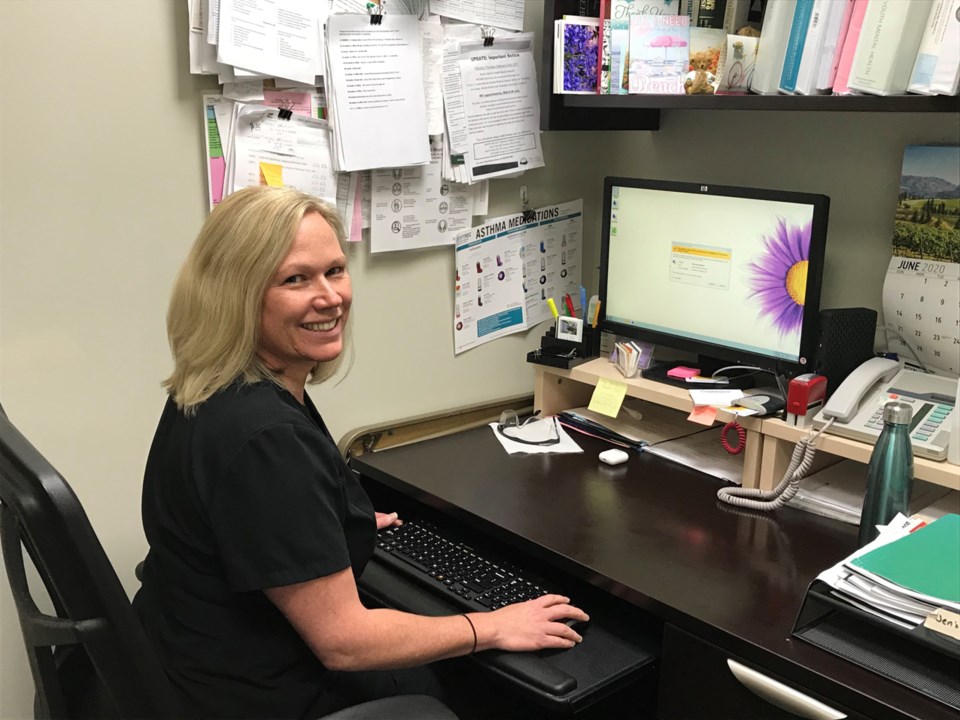A shift in the way health care is provided in South Delta has been a positive amidst the challenges of the COVID-19 pandemic.
Dr. Jennifer Rogerson, who has her family practice (Harvest Drive Family Practice) in Ladner, and provides primary care at the Richmond Hospital Birth Centre, said she and her colleagues have had to move quickly and shift as the pandemic has changed to ensure that all their patients are receiving the highest care possible.
One of these shifts has been to a tele-health model whereby more care is handled over the phone and in a virtual way rather than in-person clinic visits.
“I certainly think it was a stressful time in health care. There was so much need for such rapid transformation so quickly,” she said. “I think one of the things that became quite clear was how well the Delta Division of Family Practice could work with the Delta Hospital physicians and administration and Fraser Health in helping us to coordinate our care in our community in South Delta and then the same at Richmond Hospital – all really worked collaboratively and that really strengthened the teamwork approach. I think that was one of the things that helped people to transform so quickly – a supportive health care community.”
When it comes to expectant mothers, Rogerson said one of the biggest challenges has been for families following the social distancing rules.
“We would only be allowed to have one support person at the delivery and no visitors at the hospital of course,” she said. “Then when they bring their babies home, traditionally that would be a joyous time of family celebration where grand-parents or aunts and uncles would be coming to see the newborn, but during the pandemic, families had to stay in isolation so new parents were really managing a newborn on their own. II felt so much for my patients who were managing all of these new transitions so much on their own, so there has been that impact on families.”
She said the type of care in office for pre-natal patients has also changed.
“Typically, healthy, uncomplicated pregnancies, women would be seen every six weeks in the office until they were about 30 weeks pregnant and then every two to four weeks in the office as well as phone call and video appointments, so there has been lesser in-person appointments and more virtual sessions,” she said. “I would say the nurses at Richmond Hospital really went above and beyond organizing how this care would be provided and how we transformed this maternity care.”
Rogerson said the province and health authorities have been moving towards a tele-health model for a number of years, but that move has been challenging.
“It’s quite a change in the way we practice, think and structure our day, so I think prior to the pandemic people were a little worried about making that big change, but it’s been a positive catalyst to help that transition happen more rapidly and to realize that we were able to provide a lot of primary care through our family practice offices even in a situation where we were limiting the number of physical interactions with our patients.”
She hopes patients see the changes in care as a positive.
“I think all of the community family doctors have worked hard to try and continue to provide care and support for their patients,” she said. “The feedback I get from my patients is that they appreciate the flexibility in being able to access care and not having to leave their homes in order to follow the protocols around social distancing.”
She said she thinks this is a transformation in health care that will last long after the pandemic has passed.
“We have moved from 20th Century family practice care to 21st Century family practice care, which has allowed us to have a bit more flexibility,” she said. “Tele-health is a tool that we can use to support our patients, have flexibility and timely access and help keep ourselves safe by not having to pack ourselves into a waiting room in a physical space.”



